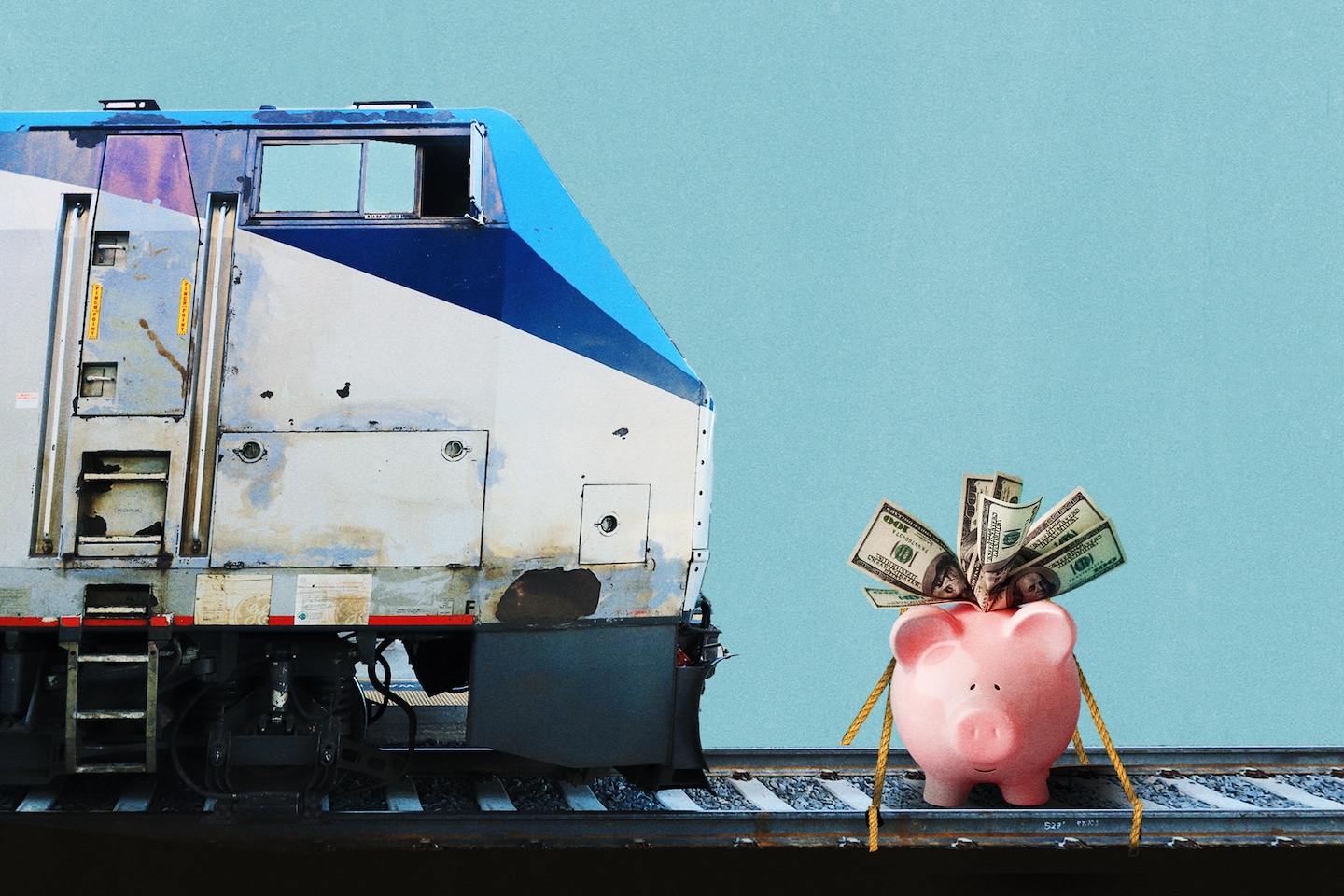Amtrak has overhauled its pricing system by getting rid of its cheapest tier of tickets, but the company says investments in pricing technology will ultimately help it offer more low-cost fares to customers.
In changes the rail company announced earlier this month, Amtrak said it was eliminating the Saver fare category to prioritize flexibility on cancellation and refund options.
The new system, which went into effect Wednesday, consolidates the previous three-tier system of Flexible, Value and Saver fares, into just Flex and Value options.
- Flex tickets allow customers to get full refunds and change their fares at no extra cost.
- Value tickets are eligible for a 75 percent refund on cancellations, but customers will not be able to make changes. That’s the trade-off for a lower price.
The new Value system is loosely based off an older version of the Saver fare that gave customers a voucher for a partial refund from their original fare if they canceled, or charged a 25 percent fee to change the reservation. Two years ago, Amtrak began selling their popular Saver tickets as nonrefundable, which eliminated the option for customers to rebook if plans changed.
The changes to fare structures apply to coach and Acela business class, Amtrak said, because Acela first-class tickets and non-Acela business class tickets already have fully refundable and flexible options.
“Everything we do at Amtrak revolves around improving our customer experience,” said Amtrak executive vice president Eliot Hamlisch. “Streamlining our fare options will make it easier for customers to find flexible tickets that work for them, all at much lower price points.”
Amtrak is a taxpayer-funded organization that receives subsidies from states and the federal government. Its pricing models are controlled by states, so it varies across the company’s three operating lines: the Northeast Corridor, state-supported routes and long-distance routes.
Amtrak has been able to augment lower fares and upgraded services due in large part to a budget increase from the Biden administration’s bipartisan infrastructure deal, which allocated $66 billion in federal funds to address maintenance backlogs and modernize trains on the Northeast Corridor. That represents the largest investment in passenger rail service since its creation in 1971, according to White House officials.
Amtrak has been working with states to expand the number of pricing models they can choose from. The more price buckets a state has, the better the chance routes will see a decreases in price. Some state-supported routes have allowed prices to be set under a fixed flat rate, while other states and long-distance routes have offered five different price points. Some lines have offered up to eight different price points.
Under the new system, most lines have expanded their systems to choose prices from up to 15 different fare models, Hamlisch said. A few states have not yet followed suit to their corresponding lines, which Amtrak said is a work in progress pending approvals from agencies and partners.
Because of the added price buckets, Amtrak is able to offer fares at lower prices across its 30 train routes. This will have the biggest impact on routes that have historically seen less demand, because there’s more of an impetus to fill seats, according to Rail Passengers Association President Jim Mathews.
“We have fought for many years to get something like this put in place, as it’s been kind of a major issue on behalf of our own members and the traveling public,” he said. “It’s been a major issue, that fares are ridiculously high throughout the Northeast Corridor, and inconsistently high and low elsewhere in the country.”
Although these price decreases will be seen across most routes, individual fares still depend on various factors, including how far in advance a passenger has booked, demand and seasonal price changes. Passengers are already able to see drastic price drops for various popular routes, as well as those less in demand, Hamlisch said.
“You’ll see most prices drop a bit across most markets, but where customers will see more of a drop is on Flex, which is a remnant of the Flexible system that was previously the most expensive fare,” he said.
According to one example Amtrak provided, a one-way fare going from D.C. to Philadelphia cost $18 for the cheapest Value ticket and $20 for a Flex option. That’s roughly $107 less than the Flexible ticket would have been priced under the old model.
The changes, Hamlisch said, build upon recent enhancements that Amtrak has launched through various initiatives.
Amtrak recently expanded Night Owl options, with some fares as low as $5 to $20 on trains that depart between 7 p.m. and 7 a.m. And last year, Amtrak improved its Share Fares system to allow groups of three to eight passengers to receive up to 60 percent off their tickets when reserving together.
In recent years, Amtrak has seen a drastic increase in ridership, with more than 9.2 million passengers during fiscal year 2022, a jump from 4.4 million during the previous year, according to data from the corporation. Hamlisch said these increases in federal funds have helped Amtrak modernize the infrastructure at their stations and trains, which in turn allows the corporation to revamp its fare categories.
These investments tie into Amtrak’s goals of doubling ridership by 2040.
“Enhancing the customer experience is an important part of that,” Hamlisch said.
